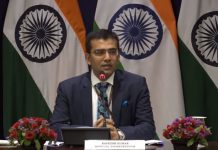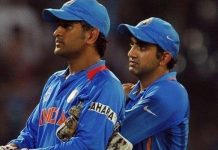
With around 50 Pradesh Congress Committee (PCC) members joining Democratic Azad Party (DAP), floated by Ghulam Nabi Azad, the grand old party has ceased to be a viable political force in the state with hardly any vote-gathering leader left in the party, writes Riyaz Wani
While Ghulam Nabi Azad’s exit from Congress may not have made much of a difference to the fortunes of Congress at the national level, it has dealt a big blow to the Congress in Jammu and Kashmir.
With Azad floating Democratic Azad Party (DAP), most of the prominent Congress leaders in the union territory have joined the new party, further depleting the local Congress ranks. Congress, as a result, has ceased to be a viable political force in Jammu and Kashmir with hardly any vote-gathering leader left in the party. Among them are leaders like Taj Mohiuddin, Ghulam Mohammad Saroori, Pirzada Mohammad Sayeed, and the like. Around 50 Pradesh Congress Committee members have since left the party to join Azad.
This is expected to enable DAP to make deep inroads into the constituencies of the other parties, particularly the Muslim vote bank in the Jammu division which may or may not go to the advantage of the BJP in the future Assembly election expected to be held later this year or early next year.
Meanwhile, local Congress sans Azad has been left without any identifiable support base. Let alone not being charismatic, the new president Viqar Rasool is known to be a political lightweight. He isn’t a mass leader unlike some of the leaders in the regional parties such as the National Conference and the PDP. Nor is the former president Ghulam Ahmad Mir or anyone else.
This has hobbled the party in the union territory. Making things worse, Congress in the UT has no engaging political narrative to draw support from the public. Its position on the revocation of Article 370 remains ambiguous. The party has reconciled to the withdrawal of J&K autonomy but has expressed its opposition to the manner in which it was done. It has also singularly failed to highlight the BJP’s failures in the UT.
To top it all, after Azad’s exit, Congress in the UT is riven by internal rumblings with several factions confronting one another. This is the time for the Congress high command to act. This is critical not only for the Congress revival but also for the survival of the party in the union territory. The party has witnessed a steep fall in its electoral fortunes in the state-turned union territory since the landslide victory of the BJP in the Jammu division in 2015 Assembly elections. The saffron party won 25 of the 37 seats in the division enabling it to be a part of the coalition government with the PDP which got 28 seats.
From 2002-2015, Jammu and Kashmir has had three successive coalition governments – PDP-Congress, NC-Congress and PDP-BJP.
The coalitions began with the advent of the PDP in 1999. The party formed by the former Congress leader Mufti Mohammad Sayeed and his daughter Mehbooba Mufti morphed into a credible opposition by 2002 when it ended the NC’s vaunted political hold on Kashmir in the then Assembly polls. The new reality turned Congress into a kingmaker over the following twelve years. With the Valley’s seats split between them, the NC and PDP were hardly in a position to form the government without Congress’s support.
But in 2015 polls when Congress was decimated in Jammu, the BJP stepped into the breach, obliging the single largest party PDP to share power with the saffron party.
Ever since the BJP has been on a roll not only in J&K but also across the country. Would the Congress mount a serious challenge to the party in the fresh assembly polls in the UT likely to be held in near future? This will largely depend on how the party will politically rejuvenate itself. And also, what political narrative the party propagates. Together with that of the other parties, Congress’s electoral performance would be crucial in determining who rules J&K once elections are held.










